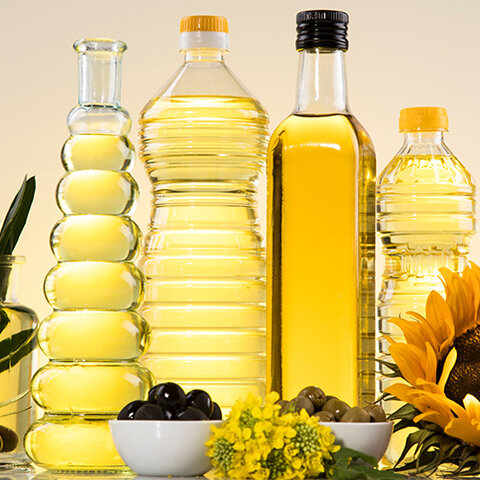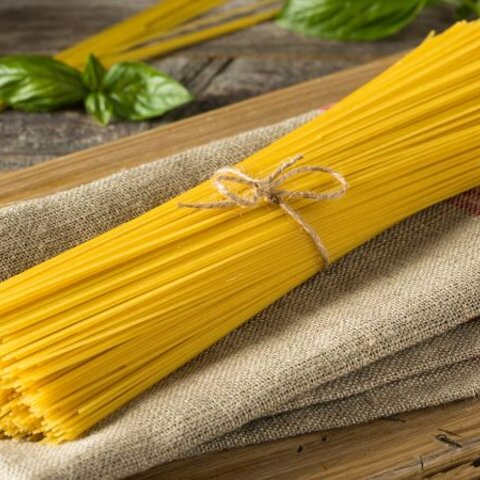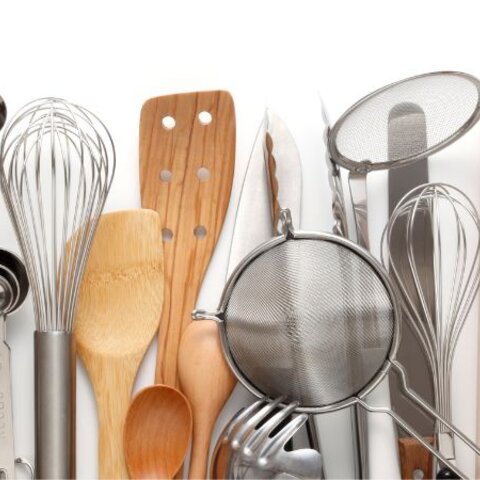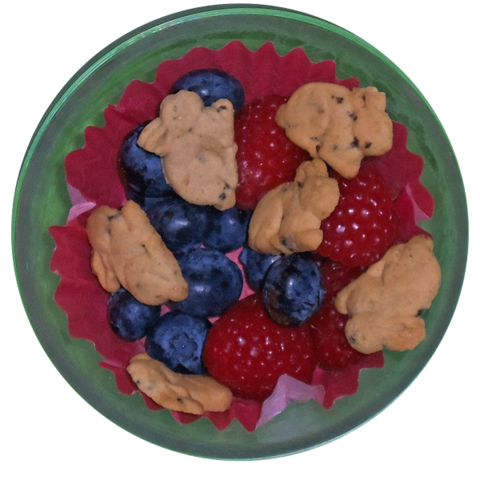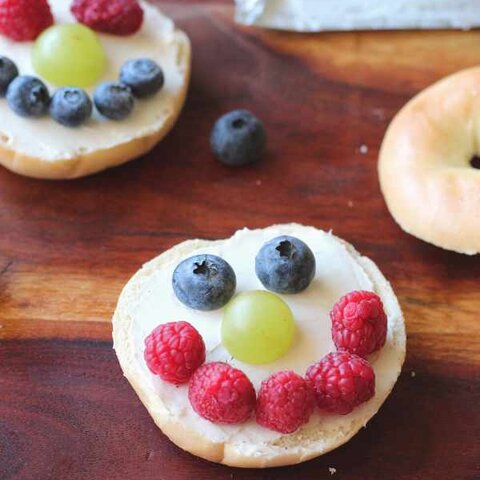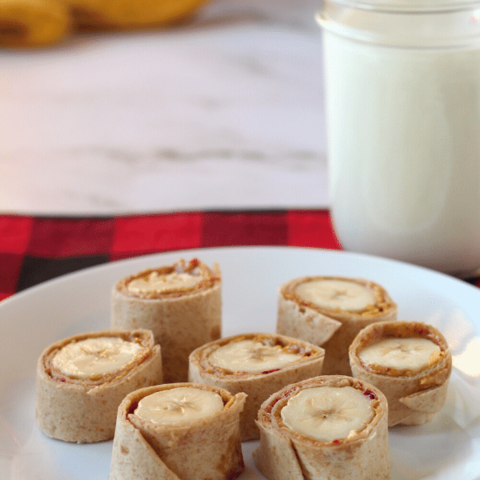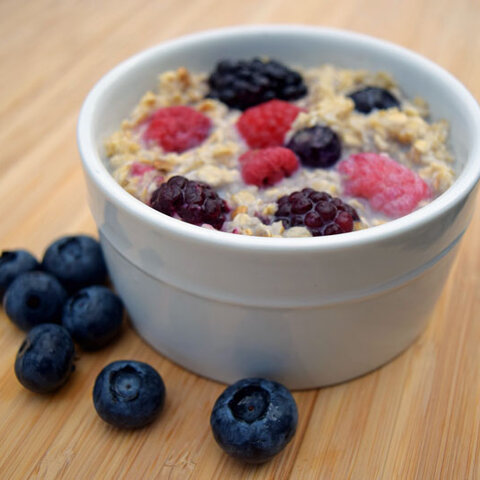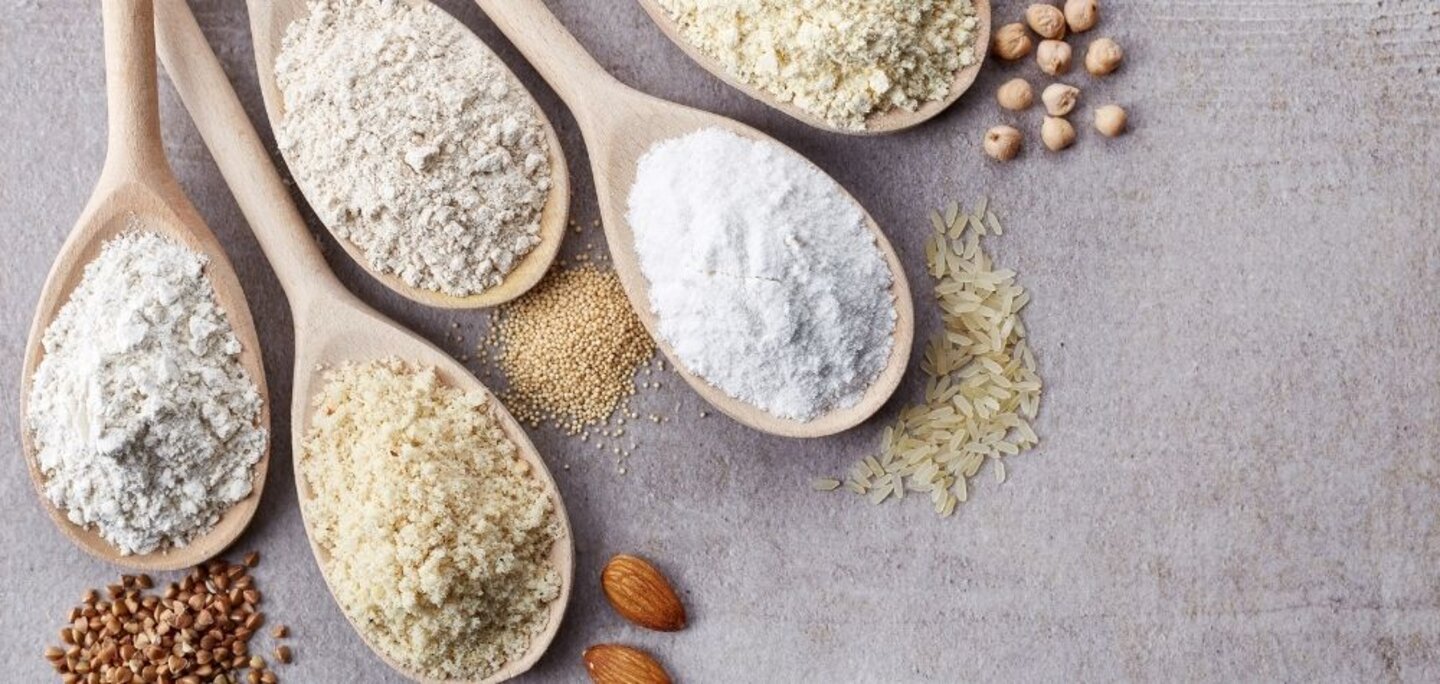
The baking isle at the local supermarket has grown to include a wide variety of flours made from many types of grain, nuts, seeds, legumes, and certain vegetables. Each type of flour has a different nutritional profile and it's baking properties will vary. Traditionally, most flour was milled from wheat which contains gluten. What is gluten and how does it affect baking?
- Gluten is the general name for one of the proteins found in wheat, barley and rye.
- These proteins interact with each other when mixed with water forming a gluten structure. This elastic framework allows dough to stretch and expand when the leavening is added, producing a gas and causing baked products to rise.
- The different types of wheat flours contain varying amounts of the gluten proteins.
Baking can be done with flour that does not contain gluten but is usually done in combination with another type of flour. All flours offer a variety of uses and qualities. Here is more information on just a few of the many different types of flour available:
Wheat Flours
- All-Purpose Flour – This flour is a blend of hard and soft wheat and only includes the endosperm of the wheat kernel. It has a 10-12% protein content making for a strong, elastic and porous baked product. Bleached and unbleached all-purpose flours can be used interchangeably.
- Whole Wheat Flour – This flour is made by grinding all three parts of the wheat kernel (the bran, the germ, and the endosperm). Whole wheat flour typically had darker flecks but that is no longer the case. It is flavorful and more nutritious than all-purpose flour. Whole wheat flour does have a coarse texture and is more absorbent than all-purpose flour, requiring a higher liquid ratio. White whole wheat flour is another option at the supermarket. The color and flavor are lighter and milder than that of whole-wheat flour.
- Cake Flour – This flour is made from soft wheat and has less gluten, creating a crumblier texture. It is often used in tender cakes and pastries.
- Bread Flour – This wheat flour is highly desirable for breadmaking. It has a high proportion of gluten, containing about 12% protein. Bread flour is used for yeast breads because it produces a greater gluten structure, allowing for a light, high-volume texture in breads.
Non-Wheat Flours
- Rice Flour – Rice flour has about 6% protein and will not form a gluten structure. Rice flour is milled from broken kernels of soft white or brown rice. It has a bland flavor and a slight grainy texture. It can be used in combination with other flours.
- Potato Flour – This non-gluten flour is typically used in combination with other flours. It has a mild potato taste. Potato flour can used to create smooth sauces, gravies and soups and in gluten-free baking.
- Soy Flour – Soy flour is much higher in protein than flour made from wheat. However, it does not contain gluten and must be mixed with other types of flour in baking. Soy flour is light yellow in color. It has a strong, nutty taste and can mixed with nuts, spices, or chocolate to help lessen the stronger flavor.
- Rye Flour – This dark colored, distinctive flavored flour has little gluten. Most rye bread recipes as well as commercially baked rye breads contain wheat flour along with the rye.
- Oat Flour – This flour has a mild flavor. It can be purchased ready to use or made at home by grinding dry oats. One and one-half cup of regular quick-cooking oats makes one-cup of oat flour. Commercial oatmeal breads usually will contain some wheat flour.
Flour Substitutions
Missing a certain type of flour? Check out these basic ingredient substitutions to see if you are able to substitute with other ingredients found in your kitchen.
| Type of Flour | Amount | Substitute |
|---|---|---|
| All-Purpose Flour | 1 cup | ½ cup whole wheat flour plus ½ cup all-purpose flour |
| Cake Flour | 1 cup | 1 cup minus 2 tablespoons all-purpose flour |
| Self-Rising Flour | 1 cup |
1 cup minus 2 teaspoons all-purpose flour plus 1 ½ teaspoons baking powder and ½ teaspoon salt |
Flour and Food Safety
Flour is typically a raw food. The grains from which flour is ground are grown outdoors and may be exposed to a variety of harmful bacteria like Salmonella and pathogenic E. coli. Protect yourself and your family by keeping the following in mind when using flour.
- Many foods made with flour also contain raw eggs, which may contain harmful bacteria.
- Cooking/baking is the only way to be sure that foods made with flour and raw eggs are safe by heating the flour high enough to kill harmful bacteria.
- Never eat or taste raw flour, dough, or batter.
Sources:
Handling Flour Safely: What You Need to Know, Food and Drug Administration (FDA)
Flour Power: Learn about Different Kinds of Flours, Academy of Nutrition and Dietetics
The Scoop on Alternative Flours, Food Insight
This newsletter has been peer-reviewed. It was written in 2021.
Tags:
